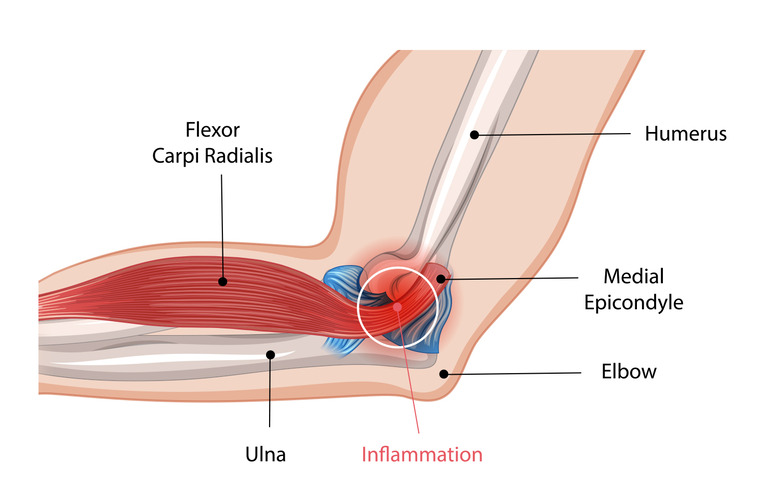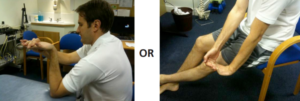About golfer's elbow
What is golfer’s elbow?
The medical term for golfer’s elbow is medial epicondylitis, which refers to the onset of pain on the inner aspect of the elbow joint. The humerus bone of the upper arm has bony protrusions on the inside and outside of the elbow called epicondyles.
Golfer’s elbow develops when the tendon on the inside (medial) aspect of the elbow becomes irritated at it’s attachment to the bone.

This diagram shows the area of tendon that is affected by golfer’s elbow.
Why does it happen?
Golfer’s elbow is most commonly caused by overuse of muscles in the forearm that flex (curl inwards) the wrist and fingers. Sports such as golf or other activities which involve repeated gripping or flexion of the wrist and fingers, and overuse of the tendons can cause degeneration in the form of microscopic tears. This then causes the symptoms of golfer’s elbow.
Sudden increases in activity or repeated strain can also lead to tendon degeneration such as starting a DIY project, a new job or sporting interest.
What are the symptoms?
The main symptoms are pain and local tenderness on the inner aspect of the elbow. Initially, pain may only occur with sudden forceful activity involving grasping or certain sporting or work activities. As the condition develops, dull aching symptoms may become more constant. There are usually no external symptoms present such as swelling or redness of the skin.
How is the condition treated?
Initially treatment involves limiting the aggravating activities that stress the tendon. This may involve adjusting sporting or working activities, for example making changes to the position of the wrist whilst using a keyboard. An elbow clasp and brace may be worn to unload the tendon. The use of an ice pack applied to the painful area may help to control pain.
The main treatment that has been shown to be effective in resolving the problem is an exercise programme of specific strengthening and stretching exercises which your physiotherapist can teach you. Injections or surgery are usually only required in a very small minority of cases.
How do I prevent symptoms re-occurring?
Symptoms are usually caused by overuse of the forearm flexor muscles, so avoiding sudden increases in the loading of these muscles will help to prevent the problem.
Build up slowly if you are starting a new sport or activity so your muscles and tendons can adapt to the work. If you are doing DIY try to break the job up into manageable amounts and avoid lots of repetitive movements all in one go.
Rehabilitation exercises for golfer’s elbow
Tendon strengthening
Tendon strengthening

- Sit with your hand supported on a table or on your knee.
- Start with your wrist flexed forward and apply pressure to the front of your hand with the opposite hand.
- Slowly start to bend your wrist whilst maintaining pressure with the other hand throughout the movement.
- Repeat this 15 times for 3 sets.
- Perform this twice a day
© Image credit: Wibbi
Forearm stretch
Forearm stretch

- Pull your wrist backwards until you feel a stretch in your forearm.
- You may need to straighten you elbow to increase the stretch.
- Hold for 30 seconds and repeat 5 times.
- Perform this twice a day
© Image credit: Wibbi


